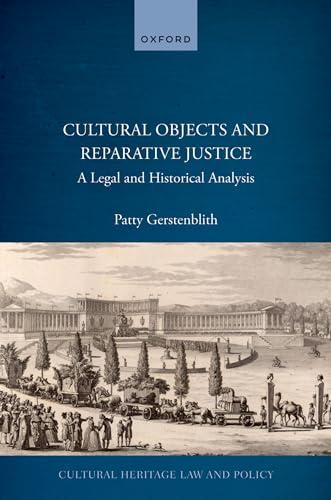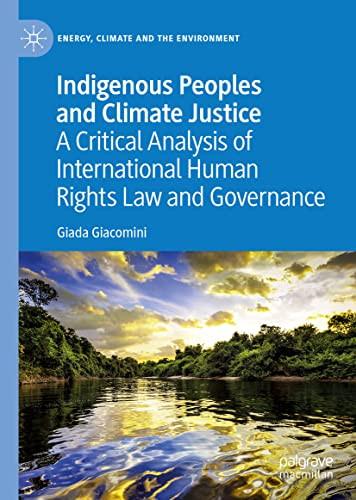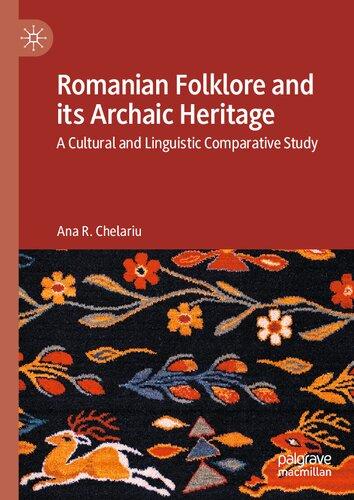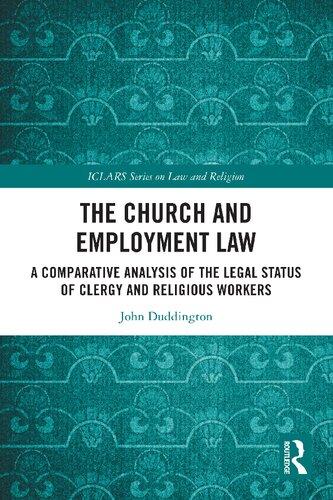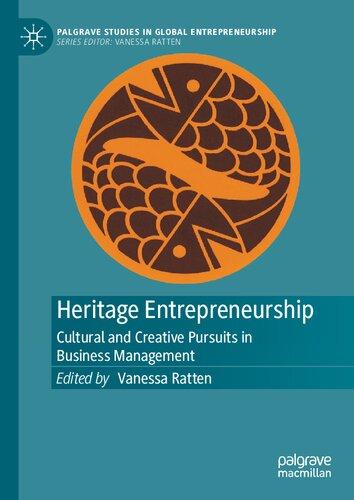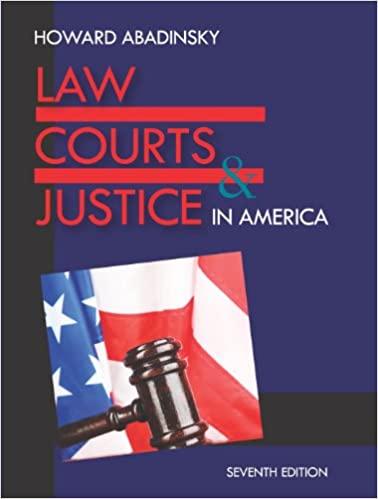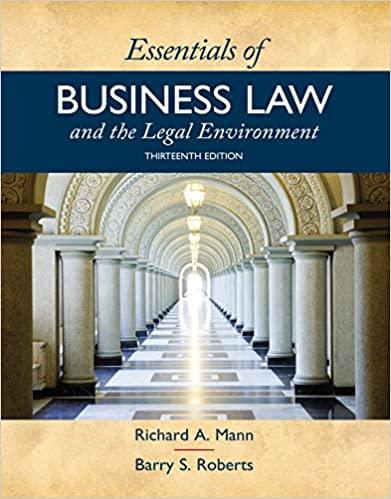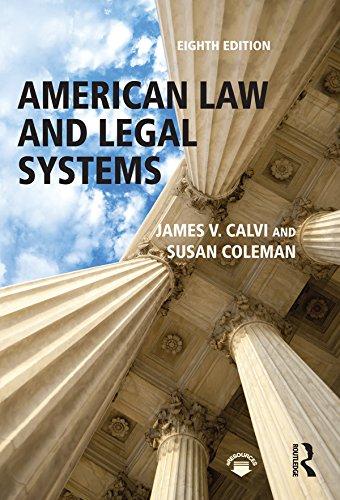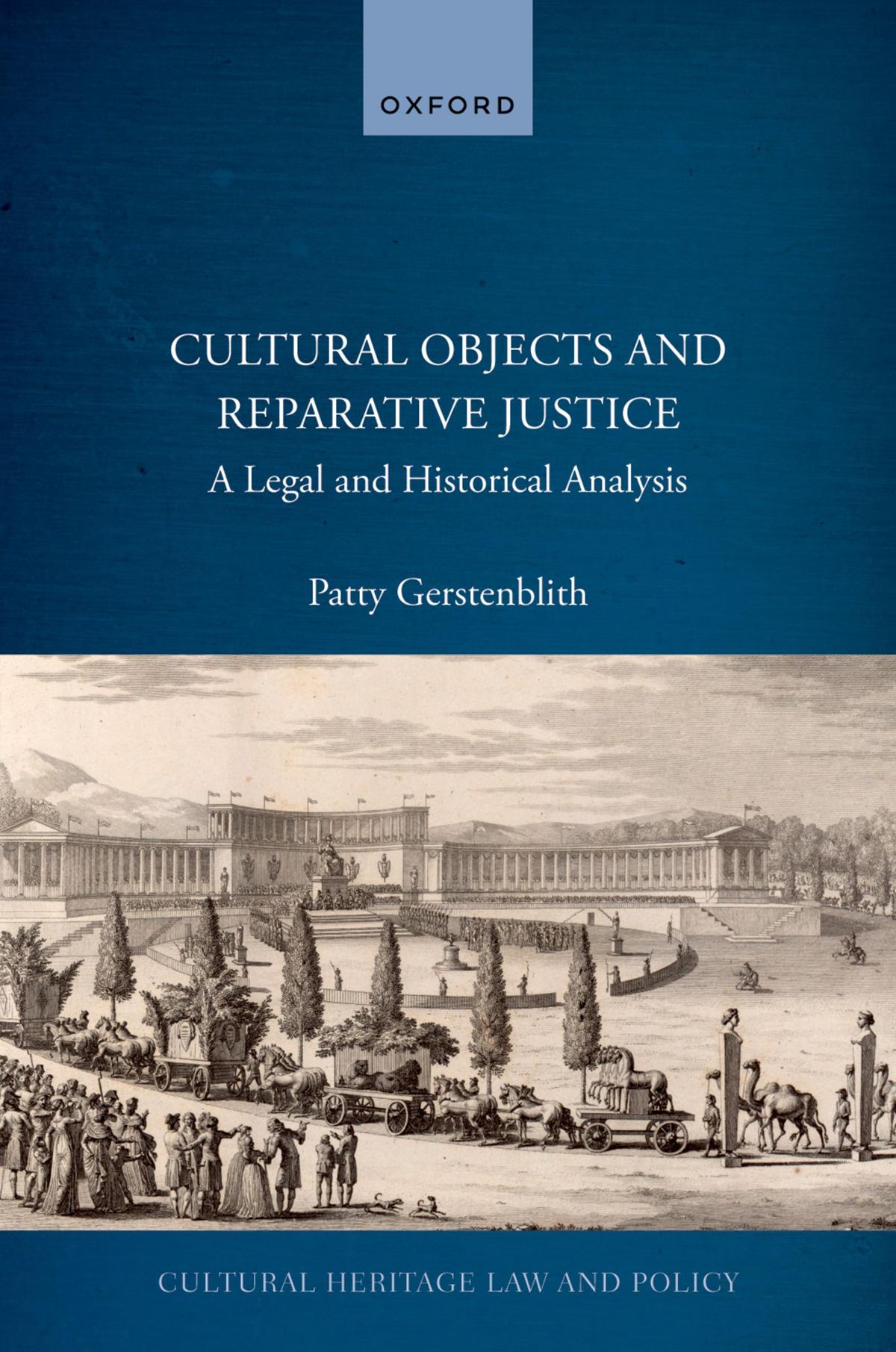Cultural Objects and Reparative Justice
ALegalandHistoricalAnalysis
PATTY GERSTENBLITH
Great Clarendon Street, Oxford, OX2 6DP, United Kingdom
Oxford University Press is a department of the University of Oxford. It furthers the University’s objective of excellence in research, scholarship, and education by publishing worldwide. Oxford is a registered trade mark of Oxford University Press in the UK and in certain other countries
© Patty Gerstenblith 2023
The moral rights of the author have been asserted
First Edition published in 2023
All rights reserved. No part of this publication may be reproduced, stored in a retrieval system, or transmitted, in any form or by any means, without the prior permission in writing of Oxford University Press, or as expressly permitted by law, by licence or under terms agreed with the appropriate reprographics rights organization. Enquiries concerning reproduction outside the scope of the above should be sent to the Rights Department, Oxford University Press, at the address above
You must not circulate this work in any other form and you must impose this same condition on any acquirer
Public sector information reproduced under Open Government Licence v3.0 (http://www.nationalarchives.gov.uk/doc/open-government-licence/opengovernment-licence.htm)
Published in the United States of America by Oxford University Press 198 Madison Avenue, New York, NY 10016, United States of America
British Library Cataloguing in Publication Data
Data available
Library of Congress Control Number: 2023943120
ISBN 978–0–19–287210–4 eISBN 978–0–19–287212–8
DOI: 10.1093/oso/9780192872104.001.0001
Links to third party websites are provided by Oxford in good faith and for information only. Oxford disclaims any responsibility for the materials contained in any third party website referenced in this work.
Preface
I started thinking about this project close to fifteen years ago. During this time, it evolved through numerous stages, but I kept returning to particular issues. One was the formative time period between the mid-eighteenth century and early part of the nineteenth century when the strands of the cultural heritage debate developed. This formative period set the groundwork for the questions of why cultural objects were appropriated during colonialism, imperialism and armed conflict and under what circumstances they should be returned.
Cultural heritage and cultural heritage law have received increasing attention in the past several decades. Much of this attention has expanded in two directions: first, to give greater consideration to intangible heritage, and, second, with respect to tangible heritage, to focus on the destruction of historic structures, looting of archaeological sites, and thefts from institutions, often in the context of armed conflict. This volume focuses not on destruction and the means of preservation but what I call the cultural heritage debate—the question of where movable tangible cultural objects that were taken without consent both recently and in the further past should be located. Such objects have often been appropriated through armed conflict, theft, colonialism, and different forms of imperialism. These different methods of appropriation in different time periods implicate different legal responses and the search for other answers when the law, as currently configured, gives an inadequate response. In particular, focus has turned to what may be termed ‘historic appropriations’—those that occurred beyond the reach of contemporary law and therefore require other solutions.
This volume attempts to bridge legal approaches and non-legal approaches in an interdisciplinary manner. Any attempt to provide a comprehensive answer to the question of where cultural objects should be located depends on the use of three interdisciplinary methodologies. The first requires us to look at cultural heritage from three perspectives: the universal or global, the State (or national), and the local community. The second methodology is interdisciplinary within the fields of law and ethics, combining international and domestic law, international humanitarian law, and international human rights law. The third methodology includes the several disciplines of history, art history, archaeology, and anthropology. This volume also attempts to interrelate within tangible cultural heritage three areas that are often analysed independently: Holocaust-looted art, Indigenous cultural heritage and human remains, and archaeological artefacts. Distinct legal responses have evolved around these, but each can learn from the solutions and challenges that restitution in the context of the other two has posed.
In an innovative approach, the work analyses several examples of appropriation cutting across time and geography to consider the Parthenon Sculptures, the Yuanmingyuan Palace, the Benin objects, Indigenous human remains and cultural items, archaeological artefacts, and artworks looted during the Holocaust. These types of cultural objects and different circumstances of their appropriation inform the work’s proposal of a paradigm for reparations. Acknowledging that the foundations of our modern laws and ethical guidelines with respect to cultural heritage are built on a history of imperialism and colonialism, this work advocates for a new structure based on reparation, restitution, repatriation, compensation, and market regulation in order to no longer perpetuate past harms while disincentivizing new harms. Finally, it sets out a paradigm based on process and defined principles for the restitution of human remains and cultural objects that were removed from their communities and States as a result of colonialism, armed conflict, or imperialism. It is in proposing this paradigm and set of principles for reparations that
this volume hopes to make its contribution to the debate concerning the location of cultural objects.
July 2023
Series Editors’ Preface
The complex legal and moral questions surrounding the return of ‘historically removed’ cultural objects have increasingly enlivened the imagination of lawyers, scholars, and the general public in the last decade. The fraught circumstances surrounding the removal, display, and possible restitution of cultural objects during foreign occupation, especially colonial occupation has come to the fore again, some half century or more since the formal commencement of decolonization by the United Nations. The current iteration of these debates reveals, once again, that these processes are incomplete, and its legacies ongoing.
Patty Gerstenblith’s book is the first volume in this series which focuses on the fate of movable heritage as defined in national and international law. Professor Gerstenblith zeroes in on the perennial issues around removal, protection, and return in an allencompassing way, drawing on veins of scholarship from multiple disciplines and legal and policy practice across several continents. The first half of this important monograph lays out the key conceptual and historical concerns which have come to define this field. For it is impossible to truly appreciate the constructs (legal and linguistic) which define the legal and scholarly debates and blockages (real and perceived) which hinder confrontation and resolution of restitution claims without a detailed, nuanced, and critical understanding of the historical context. The second half is equally meticulous in its forensic and systematic examination of the national and international legal and non-legal frameworks which define responses to restitution claims. Mirroring the ambition of the first part, Professor Gerstenblith draws on important recent developments from a broad swath of sources to emphasize the perennial nature of legal and ethical concerns across time and space.
For the circumstances which gave rise to ‘historic’ removals continue to inform cultural losses in the same communities today. And lessons learned in respect of successful restitution of human remains or Holocaust-related claims may inform responses to other restitution requests. Satisfyingly, the author brings all these threads together to distil the major modalities for the resolution of restitution claims. From beginning to end—from its framing of the conceptual and historic issues, to its all-encompassing treatment of the legal and ethical concerns, to its enunciation of a way forward for resolving claims—this volume provides a vital and rich contribution to one of the most important issues in cultural heritage law today.
Francesco Francioni and Ana Filipa Vrdoljak
Acknowledgements
This project evolved over many years, attempting to keep pace with the many changing facets of the issues involved in determining where cultural objects should be located. The project benefited from conversations, both serious and casual, with many colleagues and mentors in this field. While I risk omitting someone from this list, I want to thank especially Professor Francesco Francioni and Professor Ana Vrdoljak, the editors of the Oxford University Press Cultural Heritage Law and Policy series, for their wisdom, guidance, encouragement, and friendship. Among my peers, colleagues, and friends to whom I am much indebted, I include Neil Brodie, Brian Daniels, Holly Flora, Morag Kersel, Laetitia La Follette, Richard Leventhal, Jane Levine, Claire Lyons, Victoria Reed, and Nancy Wilkie. I owe much to my mentors including Willard Boyd, Norman Palmer, Lyndel Prott, and Patrick O’Keefe. I am grateful to the Dartmouth Montgomery Fellowship Program, which gave me the opportunity to spend two weeks at Dartmouth in the autumn of 2021. There I was able to present some of this research and to discuss issues of colonialism and imperialism with several members of the Dartmouth faculty. I also presented segments of this work at the University of Pennsylvania Cultural Heritage Center and at Cardozo Law School. I appreciate the feedback I received that helped to improve this endeavour. I also want to thank the anonymous reviewers whose critiques contributed to improvement of the volume.
Much as I have learned from my teachers and colleagues, I have also learned from my students. Many have helped me with this project over the years, including Lauren Bursey, Kahlia Halpern, and Meghan Jackson. I want to thank the Dean of the College of Law Jennifer Rosato Perea for her encouragement of this endeavour over
the past several years. The DePaul University Research Council supported my work on the volume through a research leave and funding for illustration permissions.
Above all, I want to thank my family and especially my husband, Sam Gordon, for their love, patience, guidance, and support.
Contents
ListofIllustrations
TableofCases
TableofInstruments
ListofAbbreviations
1.
Introduction
Introduction
Defining Culture and Cultural Objects
Defining Cultural Property and Cultural Heritage Interests and Authority
International Community States
Local and Descendant Communities
Contextualism
Structure
2. 2.1 2.2
Origins of the Debate Concerning Location of Cultural Objects
Introduction
Armed Conflict and Cultural Objects: Antiquity to the Beginning of the Modern Era
Antiquity to the French Revolution
The French Revolution
The Napoleonic Wars and Their Aftermath
The Encyclopedic or Universal Museum
Development of the Study of the Past as a Science
Early Exploration of the Past
Towards the Science of Archaeology
Archaeology and Imperialism
2.5
Conclusion
3. 3.1 3.2 3.2.1 3.2.2 3.2.3 3.2.4 3.3 3.4 3.5
Historical Appropriations/Historical Claims
Introduction
The Parthenon Sculptures
The Sculptures in Antiquity
The Sculptures in the Eighteenth and Nineteenth Centuries
The Parthenon Sculptures as Contemporary Symbol The Rescue Narrative and Contextualism
The Yuanmingyuan Palace Complex
The Benin Cultural Objects
Conclusion
4. 4.1 4.2 4.2.1 4.2.2 4.2.3 4.2.4 4.2.5 4.3 4.3.1 4.3.2 4.3.3 4.3.4 4.4
Appropriation of Archaeological Heritage: Market Demand and Legal Responses
Introduction
The Role of the International Market in Antiquities
Loss of Cultural and Intellectual Capital Loss to Knowledge
Physical Integrity Forgeries
Funding of Armed Conflict and Other Criminal Activity
Legal Responses
Development of Laws Protecting Archaeological Heritage
State Ownership of Antiquities
Cultural Property Agreements and International Conventions
Customs Laws
Conclusion
5. 5.1 5.2
The Right to Objects of Cultural Heritage
Introduction
The Law of Armed Conflict: The Hague Conventions
5.2.1
5.2.2
5.3
The 1899 and 1907 Hague Conventions and the Two World Wars
The Framework of the 1954 Hague Convention
A Human Rights Approach to the Disposition of Cultural Objects
5.3.1
5.3.2
5.3.3
5.4
The Role of Cultural Genocide
Human Rights and Cultural Objects
Human Remains and Burial Goods
International and Regional Conventions and the Regulation of Trade in Cultural Objects
5.4.1
5.4.2
5.4.3
5.5
6. 6.1
The 1970 UNESCO and 1995 UNIDROIT Conventions
European Union Import and Export Restrictions
UN Security Council Resolutions
Conclusion
Beyond the Law: Ethical Considerations
Introduction
6.2 6.3
6.4
General Codes of Conduct
Codes of Conduct with Respect to Cultural Works Looted during the Holocaust
The 1970 UNESCO Convention as an Ethical Standard
6.4.1
6.4.2
6.4.3 6.5 6.6
7. 7.1
Professional and Scholarly Associations
Museum Policies
Codes of Conduct among Market Participants
Human Remains and Indigenous Sacred and Cultural Objects
Conclusion
Historical Appropriations: Of Time and Reparative Justice
Introduction
7.2
The Problem of Time
7.2.1
7.2.2
7.2.3
Bars Based on Passage of Time
Bars Based on Non-Retroactivity
The Double Standard of Nineteenth-Century International Law
Index
The Cultural Heritage Debate in Contemporary Context
The Rescue Narrative Revisited The Universal or Encyclopedic Museum National Identity
The Right to Reparations Justice through Reparations Principles of Reparative Justice Applied: Reparations Design
Means of Reparation Conclusion
List of Illustrations
2.1 2.2 2.3 2.4 2.5 2.6 3.1 3.2
Arch of Titus, Rome, 81 CE. Panel (copy), depicting the Triumphal March and Spoils of the Second Temple. Wikimedia Commons/Beit HaShalom (CC by 3.0)
Laocoön. Hellenistic style, date uncertain, possibly a Roman copy. Photo copyright © Governorate of the Vatican City State —Directorate of the Vatican Museums
Salvator Rosa, RockyLandscapewithFigures(c1650) oil on canvas, 51.3 × 66.4 cm. Gift of the United States in Recognition of the historic 1813 decision by the Honourable Sir Alexander Croke, Justice of the Court of Vice-Admiralty, Halifax, respecting prizes of war. Presented by the United States Consul-General of Halifax, 1952
Salvator Rosa, LandscapewithTwoSoldiersandRuins(c. 1650), oil on canvas, 50.4 x 66.4 cm. Gift of the United States in Recognition of the historic 1813 decision by the Honourable Sir Alexander Croke, Justice of the Court of Vice-Admiralty, Halifax, respecting prizes of war. Presented by the United States Consul-General of Halifax, 1952
Rosetta Stone. Egypt. 196 BCE. Photos.com/Getty Images Plus The Colossi of Memnon. Baron Dominique Vivant Denon, study for VoyagedanslaBasseetlaHauteÉgypte,pendantles campagnesduGénéralBonaparte, Paris 1802. British Museum 1836,0109.56 © The Trustees of the British Museum Edward Dodwell drawing of West front of the Parthenon (1821). Heidelberg University Library
Archibald Archer, The Temporary Elgin Room in 1819. Oil painting on canvas (1819) © The Trustees of the British
3.3 3.4 3.5
Museum
Statue of the Greek river god Ilissos from the Parthenon on display at the Hermitage Museum in 2014. Dimitri Lovetsky/AP/Shutterstock
Hall of Audience, Yuanmingyuan palace (1845). Edward Paxman (engraver) and Thomas Allom (artist). Image courtesy of the New York Public Library
Gold Cups of Eternal Stability (probably 1739–1740 and 1740–1741), made for the Quianlong Emperor (1711–1799) and acquired by Wallace at auction in Paris in 1872. © The Wallace Collection. London, UK/Bridgeman Images
3.6 3.7 4.1 4.2. 4.3 5.1 5.2
Queen Mother Pendant Mask. Benin City, Edo State, Nigeria. Early sixteenth century. Image courtesy of Metropolitan Museum of Art. The Michael C Rockefeller Memorial Collection, Gift of Nelson A Rockefeller, 1972
Brass Triad Plaque depicting the Oba flanked by two attendants and two Europeans shown on either side of his head. Benin City, Edo State, Nigeria. sixteenth–seventeenth century. © The Trustees of the British Museum
Gilgamesh ‘Dream’ Tablet, c1600 BCE, returned to Iraq in 2021. Reuters/Alamy Stock Photo
Sarpedon Krater. Euphronios (painter) and Euxitheos (potter). Attic red-figure calyx-krater, c515 BCE. Returned to Italy, now in the Museo Nazionale Cerite (Cerveteri).Heritage Image
Partnership Ltd/Alamy Stock Photo
Nefertiti Bust. Thutmose (sculptor). Amarna Period, New Kingdom, 18th Dynasty. Egypt, c1340 BCE. Neues Museum, Staatliche Museen zu Berlin. Realy Easy Star/Alamy Stock
Photo
Temple of Preah Vihear. Khmer Empire, celeventh–twelfth century. Cambodia. John W Banagan/Getty Images
Religious sites, Timbuktu, Mali. © UNESCO (CC BY-SA 3.0 IGO)
6.1
Lid of the coffin of Nedjemankh, priest of Heyrshef, Egypt, 150–50 BCE. Returned to Egypt 2019, now in the National Museum of Egyptian Civilization. Image courtesy of the Metropolitan Museum of Art. Purchase, 2017 Benefit Fund; Lila Acheson Wallace Gift; Louis V Bell, Harris Brisbane Dick, Fletcher, and Rogers Funds and Joseph Pulitzer Bequest; Leona Sobel Education and The Camille M Lownds Funds; and 2016 Benefit Fund, 2017
6.2 7.1
Rock Crystal Ewer, Egypt, Fatimid, late tenth–eleventh century. Ewer, Egypt, Fatimid dynasty, late tenth–early eleventh century; Base: Jean-Valentin Morel (French, 1794–1860), nineteenth century. Rock crystal (quartz), enamelled gold. The Keir Collection of Islamic Art on loan to the Dallas Museum of Art, K.1.2014.1.A-B. Photo © The Dallas Museum of Art
View of the Acropolis Museum, Athens. Hercules Milas/Alamy Stock Photo
7.2
Statue of Sekhemka, Egypt, Old Kingdom period (2650–2150 BCE). Guy Bell/Shutterstock
Table of Cases
INTERNATIONAL
Application de la Convention pour la Prévention et la Répression du Crime du Génocide (Croatie v. Serbie) [2015] ICJ Reports 3 . . . . . 162
Application of the Convention on the Preventing and Punishment of the Crime of Genocide (Bosnia and Herzegovina v. Serbia and Montenegro) (Judgement) [2007] ICJ Reports 43 . . . . . 162
Application of the International Convention on the Elimination of All Forms of Racial Discrimination (Armenia v Azerbaijan) (Pending) General List No 180 . . . . . 10–11, 170
Temple of Preah Vihear (Cambodia v. Thailand) (Merits, Judgment) [1962] ICJ Rep 6 . . . . . 10–11, 168–70, 228
Request for Interpretation of the Judgment of 15 June 1962 in the case concerning the Temple of Preah Vihear (Cambodia v Thailand) (Judgment) [2013] ICJ Rep 281 . . . . . 10–11, 228, 251–52
Prosecutor v Al Mahdi, Reparations Phase, 27 April 2017, ICC-01/12-01.15 . . . . . 151
Prosecutor v Al Mahdi [2016] ICC-01/12-01/15-171 . . . . . 10–11, 13, 171–72
Prosecutor v Al Hassan ICC-01/12-01/18 . . . . . 10–11, 151
Prosecutor v Krajišnik (Trial Judgment) ICTY-00-39-T (27 September 2006) 281 . . . . . 162–63
Prosecutor v Krstić (Trial Judgment) ICTY-98-33-T (2 August 2001) . . . . . 162
Prosecutor v Bosco Ntaganda [2020] ICC-01/04-02/06 . . . . . 10–11, 151
Prosecutor v Prlić et al, Appeal Judgment, Vol I, IT-04-74-A (29 November 2017) . . . . . 151–52
Trial of the Major War Criminals Before the International Military Tribunal 29, 55–56 (Nuremberg, 1948) . . . . . 147
United States and others v Göring and others, Indictment International Military Tribunal (E) Plunder of Public and Private Property . . . . . 147
REGIONAL
Moiwana Community v Suriname, Inter-Amer Ct HR (ser C) No 124 (28 November 2007) . . . . . 14–15
Syllogos Ton Athinaion v United Kingdom, Application No. 48259/15, ECHR (31 May 2016) . . . . . 77
Yakye Axa Indigenous Community v Paraguay, Inter-Am Ct HR (ser C) No 125 (17 June 2005) . . . . . 14–15
NATIONAL
Canada
R v Yorke, [1998] 166 NSR (2d) . . . . . 138, 186
France
Heirs Simon Bauer v Toll, Court of Cassation – First civil chamber, judgement no 810, 11 Septembre 2019 (18-25.695) . . . . . 145–46
Germany
Application for export ban on archaeological objects by means of injunction: proof of ownership or possession by the applicant foreign state. Higher Regional Court of Berlin, judgment of 16 October 2006 – 10 U 286/05, Neue Juristische Wochenschrift (NJW) 2007, p. 705 . . . . . 130
Netherlands
Autocephalous Greek Orthodox Church in Cyprus v Willem O.A. Lans, Rb (First Instance Ct) Rotterdam 4 February 1999, NJ 1999, Hof (Appeals Ct) . . . . . 153 Tavrida Central Museum and others v Ukraine, (High Council, Civil Chamber) 22/00270 (9 Junw 2023) . . . . . 265–66
United Kingdom
Attorney-General of New Zealand v Ortiz, [1982] 3 All ER 432, [1982] QB 349, revd [1982] 3 All ER 432, [1984] AC 1, affd [1983] 2 All ER 93, [1984] AC 1 . . . . . 128–29
Islamic Republic of Iran v Barakat Galleries, Ltd, [2007] EWHC 705 (QB), revd [2007] EWCA Civ 1374; [2008] 1 All ER 1177 . . . . . 130–31
Kuwait Airways Corp v Iraq Airways Co, (no 3) [2002] UKHL 19 at 13, [2002] All ER 209 at 13, [2002] 2 AC 883 . . . . . 131–32
HM Revenue & Customs v Al Qassas, unpublished, Westminster Magistrates Court (1 Sept 2015) . . . . . 140
R v Tokeley-Parry, [1999] Crim. L.R. 578 (CA 1999) . . . . . 129–30
The Marquis de Somerueles, Stewart’s Vice-Admiralty Reports, 21 April 1813, 482 (Vice-Adm. Ct Halifax N.S.) . . . . . 33–34, 36
United States
Abelesz v Magyar Nemzeti Bank, 692 F.3d 661, 675 (7th Cir. 2012) . . . . . 163–64
Autocephalous Greek-Orthodox Church of Cyprus v Goldberg & Feldman Fine Arts, Inc., 717 F. Supp. 1374 (S. Ind. 1989), aff’d, 917 F2d 278 (7th Cir 1990) . . . . . 116
Bonnichsen v United States, 357 F.3d 962 (9th Cir. 2004) . . . . . 13–14, 54–55, 177, 180–81, 220–21
Cassirer v Thyssen-Bornemisza Collection Found., 142 S. Ct. 1502 (2022) . . . . . 146
Charrier v Bell, 496 So. 2d 601 (Ct. App. Louisiana 1986) . . . . . 176
DeCsepel v Republic of Hungary, 859 F.3d 1094, 1101-02 (D.C. Cir. 2017) . . . . . 163–64
Federal Republic of Germany v Philipp, 141 S. Ct. 703 (2021) . . . . . 146, 163–64
Hahn v Duveen, 234 N.Y.S. 185 (Sup. Ct. 1929) . . . . . 80–82, 236–37
Kunstsammlungen zu Weimar v Elicofon, 678 F.2d 1150 (2d Cir. 1982) . . . . . 146
Newman v State, 174 So. 2d 479, 483 (Fla. Dist. Ct. App. 1965) . . . . . 176
New York v Wiener, Criminal Complaint (21 December 2016) . . . . . 129–30
Odyssey Marine Exploration, Inc v The Unidentified Shipwrecked Vessel, 657 F.3d 1159 (11th Cir. 2011) . . . . . 233–35
Republic of Austria v Altmann, 541 U.S. 677 (2004) . . . . . 146
Republic of Turkey v Christie’s Inc and Steinhardt, 425 F. Supp. 3d 204, 214-16 (S.D.N.Y. 2019), 2021 U.S. Dist. LEXIS 169215 *16-*18 (S.D.N.Y. 2021) . . . . . 130
Republic of Turkey v Metropolitan Museum of Art, 762 F. Supp. 44 (S.D.N.Y. 1990) . . . . . 129–30
Republic of Turkey v OKS Partners, 1994 U.S. Dist. LEXIS 17032 (D. Mass. 1994) . . . . . 122–23, 129–30, 135
Simon v Republic of Hungary, 812 F.3d 127, 142-43 (D.C. Cir. 2016) . . . . . 163–64
Town of Sudbury v Dept of Public Utilities, 351 Mass. 214, (1966) . . . . . 176
United States v An Antique Platter of Gold, 991 F. Supp. 222 (S.D.N.Y. 1997), aff’d on other grounds 184 F.3d 131 (2d Cir. 1999) . . . . . 115–16, 129–30, 139
United States v Approximately Four Hundred Fifty (450) Cuneiform Tablets et. al., CV17-3980 (E.D.N.Y. 2017) . . . . . 112, 115–16
United States v Hollinshead, 495 F.2d 1154 (9th Cir. 1974) . . . . . 128
United States v Latchford, 19 Crim. 748 (S.D.N.Y. 2019) . . . . . 120, 129–30
United States v McClain, 545 F.2d 988 (5th Cir. 1977); 593 F.2d 658 (5th Cir. 1979)
. . . . . 128, 130, 135, 136
United States v One Tyrannosaurus Bataar Skeleton, 2021 US Dist. LEXIS 165153 *29-*31 (S.D.N.Y. 2012) . . . . . 135
United States v One Cuneiform Tablet known as the ‘Gilgamesh Dream Tablet’ CV 20-2222 Amended Verified Complaint in Rem (EDNY 2021) . . . . . 112
United States v Portrait of Wally, 105 F. Supp. 2d 288, 292 (S.D.N.Y. 2000) . . . . . 128
United States v Schultz, 178 F. Supp. 2d 445 (S.D.N.Y. 2002), aff’d, 333 F 3d 393 (2d Cir. 2003) . . . . . 129–30, 209–10
Vineberg v Bissonette, 548 F.3d 50 (1st Cir. 2008) . . . . . 145–46
von Saher v Norton Simon Museum of Art, 897 F.3d 1141 (9th Cir. 2018) . . . . . 146, 229
Wana the Bear v Community Construction, Inc., 180 Cal. Rptr. 423, 426-27 (Ct. App. 1982) . . . . . 176
Zuckerman v Metropolitan Museum of Art, 928 F.3d 186 (2nd Cir. 2019) . . . . . 145–46, 202, 229–30
Table of Instruments
INTERNATIONAL INSTRUMENTS
Capitulation of Alexandria (1803) ...... 70
Art 16 ...... 37–38, 38f
Convention for the Safeguarding of the Intangible Cultural Heritage (adopted 17 October 2003, entered into force 20 April 2006) 2368 UNTS 1 ...... 4–5, 165
Convention (IV) Respecting the Laws and Customs of War on Land and its Annex: Regulations concerning the Laws and Customs of War on Land (opened for signature 18 October 1907, entered into force 26 January 1910) 187 CTS 227 ...... 4, 143–44, 153–54, 234
Convention (II) with Respect to the Laws and Customs of War on Land and its Annex: Regulations concerning the Laws and Customs of War on Land (adopted 29 July 1899, entered into force 4 September 1900) 187 CTS 429 (1899 Hague Convention (II)) ...... 143–44, 234
Convention on the Means of Prohibiting and Preventing the Illicit Import, Export and Transfer of Cultural Property (adopted 14 November 1970, entered into force 24 April 1972) 823 UNTS 231 (1970 UNESCO Convention) ...... 4–5, 7, 9–10, 11–12, 13n.57, 77, 122, 132–33, 138–39, 141, 147–48, 152n.39, 152–53n.41, 158–59, 165n.97, 167, 168, 184, 186–89, 190n.211, 191, 193, 203–19, 231–33, 256, 259n.146, 265, 271
Art 1 ...... 4–5, 9n.35, 12n.48, 138, 186, 191–92
Art 2 . . . . . 9n.35
Art 3 ...... 138–39, 187
Art 4 . . . . . 11n.40
Art 5 . . . . . 11n.40, 187–88
Art 6 . . . . . 11n.40, 187–88
Art 9 ...... 138–39, 187
Art 10 ...... 187–88
Art 11 . . . . . 194n.223
Convention on the Preservation and Promotion of the Diversity of Cultural Expressions (adopted 20 October 2005, entered into force 18 March 2007) 2440 UNTS 311 ...... 165
Convention on the Prevention and Punishment of the Crime of Genocide (adopted 9 December 1948, entered into force 12 January 1951) 78 UNTS 277 (Genocide
Convention) ...... 159–60, 161–62, 163–64
Art 2(c) ...... 163–64
Convention on the Protection of the Underwater Cultural Heritage (adopted 2 November 2001, entered into force 2 January 2009) 2562 UNTS 1 ...... 126–27
Art 94 . . . . . 126n.70
Convention concerning the Protection of the World Cultural and Natural Heritage (opened for signature 16 November 1972, entered into force 17 December 1975) 1037 UNTS 151 (1972 UNESCO Convention) ...... 4–5
Council Directive 93/7/EEC of 15 March 1993 on the Return of Cultural Objects
Unlawfully Removed from the Territory of a Member State (EU) ...... 132, 189
The Council of Europe Convention on Offences relating to Cultural Property (adopted 19 May 2017) (2017) CETS 22 (Nicosia Convention) ...... 193
Council Regulation (EC) 116/2009 of 18 December 2008 on the export of cultural goods [2009] OJ L39/1 (EU)
Art 2(2) ...... 189
Council Regulation (EC) 1210/2003 of 7 July 2003 concerning certain specific restrictions on economic and financial relations with Iraq (EU) 2465/96 [2003] OJ L169/6 ...... 189, 191–92
Council Regulation (EU) 1332/2013 of 13 December 2013 concerning restrictive measures in view of the situation in Syria (EU) ...... 189, 192–93
Directive 2014/60/EU (EU) ...... 132, 189
European Convention on Human Rights (adopted 4 November 1950, entered into force 3 September 1953) UNTS 222 ...... 77
Art 8 ...... 174–75
Art 9 ...... 174–75
EU 5th Anti-Money Laundering Directive 2018/843 (30 May 2018) ...... 120
Geneva Conventions of 1949 (adopted 12 August 1949, entered into force 21 October 1950) 75 UNTS 287 ...... 150–51, 159–60
Protocol Additional to the Geneva Conventions of 12 August 1949, and Relating to the Protections of Victims of International Armed Conflicts, Geneva (adopted 8 June 1977, opened for signature 12 December 1977, entered into force 7 December 1978) 1125 UNTS 3 ...... 150–51
Art 16 ...... 150–51
Art 53 ...... 150–51
Hague Convention (II) with Respect to the Laws and Customs of War on Land and its Annex: Regulations concerning the Laws and Customs of War on Land (1899) ...... 143–44, 234
Hague Convention on the Protection of Cultural Property in the Event of Armed Conflict (adopted 14 May1954, entered into force 7 August 1956) 249 UNTS 240.
Art 4(2) . . . . . 11n.40
Art 4(3) ...... 193–94
Art 28 . . . . . 11n.40, 12n.47
First Protocol (1954) ...... 4–5, 31, 147–48
Art 4(3) ...... 193–94
Second Protocol (adopted 26 March 1999, entered into force 9 March 2004) UNTS 172 ...... 10–11, 147–48
Art 6 . . . . . 11n.40
Art 15 . . . . . 11n.40
Inter-Allied Declaration against Acts of Dispossession Committed in Territories under Enemy Occupation or Control United States Diplomatic Papers Vol 1 (1943) ...... 145–46, 202
International Convention on the Elimination of All Forms of Racial Discrimination (adopted 21 December 1965, entered into force 4 January 1969) UNGA Res 2106 (XX) annex, 660 UNTS 195 ...... 10–11, 170
International Covenant on Civil and Political Rights (ICCPR) (adopted 16 December 1966, entered into force 23 March 1976) 999 UNTS 171 ...... 165
Art 27 ...... 165, 174–75
International Covenant on Economic, Social and Cultural Rights (ICESCR) (adopted 16 December 1966, entered into force 3 January 1976) 999 UNTS 3 ...... 166
Preliminary Draft International Convention for the Protection of Historic Buildings and Works of Art in Time of War, proposed by the International Museums Office (October 1936) ...... 145
Protocol Additional to the Geneva Conventions of 12 August 1949, and Relating to the Protections of Victims of Non-International Armed Conflicts, Geneva (8 June 1977, opened for signature 12 December 1977, entered into force 7 December 1978) 1125 UNTS 609 ...... 150–51
Art 1(4) ...... 150–51
Regulation (EU) 2019/880 of the European Parliament and of the Council of 17 April 2019 on the introduction and the import of cultural goods [2019] OJ L151/1 ...... 189–90
Rome Statute of the International Criminal Court, UN Doc A/Conf 183/9, 37 ILM 999 (17 July 1998) ...... 4, 10–11, 151–52, 159, 162–63
Art 8(2)(a)(iv) ...... 151–52
Art 8(2)(b)(ix) ...... 151
Art 8(2)(b)(xiii) ...... 151–52
Art 8(2)(b)(xvi) ...... 10–11, 151–52
Art 8(2)(e)(v) ...... 10–11, 151–52
Art 8(b)(ix) ...... 4
Art 8(e)(iv) ...... 4
Treaty of Peace between the Allied and Associated Powers and Germany, Versailles, 28 June 1919, in force 10 January 1920, Cmd 516 (1920) ...... 144
Treaty on the Protection of Artistic and Scientific Institutions and Historic Monuments (adopted 15 April 1935, entered into force 26 August 1935) 167 UNTS 289 (Roerich Pact) ...... 145
UNIDROIT Convention on Stolen or Illegally Exported Cultural Objects (adopted 24 June 1995, entered into force 1 July 1998) 34 ILM 1322 ...... 4, 7, 132–34, 138n.125, 186–89, 189n.207, 191, 271
Art 3(2) ...... 133, 188n.202
Art 3(8) . . . . . 229n.4
Art 4(1) . . . . . 188n.202, 188n.203
Art 4(4) . . . . . 188n.204
Art 6 . . . . . 188n.203
Art 10(1) . . . . . 231n.13
Art 10(2) . . . . . 231n.13
Art 10(3) . . . . . 231n.13
United Nations Declaration on the Rights of Indigenous Peoples (UNDRIP) UNGA
A/RES/61/295 (13 September 2007) ...... 165, 167, 184, 250–51
Art 11(2) ...... 250–51
Art 12 ...... 174–75, 250–51
Art 32(2) ...... 174–75
United Nations Security Council Resolution 661 (6 August 1990) UN Doc S/RES/661 ...... 233–34
United Nations Security Council Resolution 1483 (22 May 2003) UN Doc S/RES/1483 ...... 138–39, 155–56, 191–93, 233–34
United Nations Security Council Resolution 2199 (12 February 2015) UN Doc S/RES/2199 ...... 138–39, 155–56, 191–93, 233–34
United Nations Security Council Resolution 2347 (24 March 2017) UN Doc S/RES/2347 ...... 120, 157–58, 173, 193, 194
Universal Declaration of Human Rights (UDHR) UN General Assembly Resolution 217A (10 December 1948) ...... 159–60, 165
Art 27 ...... 165
Vienna Convention on the Law of Treaties (opened for signature 23 May 1969, entered into force 27 January 1980) 1155 UNTS 331, 8 ILM 679 ...... 231
NATIONAL INSTRUMENTS
Australia
Aboriginal and Torres Islander Strait Heritage Preservation Act 1984 (Cth)
s 4 ...... 176
Protection of Movable Cultural Heritage Act 1986 (No 11, 1986) ...... 232–33
s 14(1) ...... 232–33
s 14(2) ...... 232–33
Canada
Cultural Property Export and Import Act, RSC 1985, c C-51
s 37(2) ...... 138, 187
First Nations Sacred Ceremonial Objects Repatriation Act RSA 2000
c F-14 (1)(e) ...... 178
s F-14 (2) ...... 178
Egypt
Law No 117 of the Year 1983 concerning the Issuance of Antiquities’ Protection Law
Law No 14 of 1912 ...... 124–26
Law No. 215 of 1951 ...... 124–26
Ordonnance du 15 août 1835 portant mesures de protection des antiquités ...... 124–26
Art 6 ...... 265–66
France
Code du Patrimoine ...... 182, 183–84
Art L111-11 ...... 157–58
Law No. 2002-323 of 6 March 2002, on the restitution by France of the remains of Saartje Baartman to South Africa ...... 182
Loi No 2010-501 of 18 May 2010 visant à autoriser la restitution par la France des têtes maories à la Nouvelle-Zélande et relative à la gestion des collections ...... 183–84, 230–31
Loi No 2022-218 du 21 février 2022 relative á la restitution ou la remise de certains biens culturels aux ayants droit de leurs propriétaires victims de persecutions antisémites ...... 230
Germany
Act on the Protection of Cultural Property (Cultural Property Protection Act KGSG)
31.7.2016, BGBl I, 2016 ...... 138, 186–87, 232–33
Transformation Act of 25 April 2007; Implementation Act of 18 April 2007; BGBl I, Nr 21 (23 May 2007) ...... 153
Art 4 ...... 233
Greece
Law 5351/32 “On Antiquities” of 1932 ...... 122–23
Italy
Code of the Cultural and Landscape Heritage, D Lgs no 42, 22 January 2004, GU
Supp no 45, 24 February 2004 ...... 126–27
Art 10 ...... 126–27
Art 88(1) ...... 126–27
Art 89(1) ...... 126–27
Art 90(1) ...... 126–27
Art 91 ...... 126–27
Art 91(1) ...... 127
Art 92(1) ...... 127
Art 92(2) ...... 127
Iraq
Antiquities Law No. 59 of 1936 ...... 132–33, 203–4
Art 3 ...... 203–4
Antiquities and Heritage Law No. 55 of 2002 ...... 132–33, 203–4
Jordan
Law of Antiquities, Law No 21 for the year 1988, amended by Law No 23 for the year 2004
Art 2(11) ...... 126–27
Arts 14–20 ...... 126–27
Netherlands
Cultural Property Originating from Occupied Territory (Return) Act (2007) ...... 153, 233
Heritage Act Relating to the Combining and Amendment of Rules Regarding Cultural Heritage (2016)
ss 6.9–6.15 ...... 153, 233
Switzerland
Federal Act on the International Transfer of Cultural Property (Cultural Property Transfer Act) (20 June 2003)
Art 7 ...... 138–39, 189–90
Ordonnance instituant des mesures économiques envers la République d’Irak, RS 946.206 (2003) ...... 191–92
Verordnung über Massnahmen gegenüber Syrien (Ordinance on Sanctions against Syria) ...... 192–93
Loi fédérale sur la protection des biens culturels en cas de conflit armé, de castastrophe ou de situation d’urgence (LPBC) RS 520.3 (20 June 2014) (Switzerland)
Art 12 ...... 157–58
Turkey
Decree on Antiquities (Asar-ı Atika Nizamnamesi) of 10 April 1906 ...... 203–4
Turkish Civil Code no 753
Art 697 (1926) ...... 203–4
United Kingdom
A Bill to Provide for the Preservation of Ancient Monuments (UK) 1873 ...... 137
British Museum Act 1963
c. 24, s 4(4) ...... 76–77
Cultural Property (Armed Conflicts) Act 2017 2017 ...... 233
s 16(1)(a)(b) ...... 153–54
s 16(2) ...... 153, 233
s 16(3) ...... 153
s 17(2) ...... 153, 233
s 21 ...... 233
Dealing in Cultural Objects (Offences) Act (UK)
Ch 27 ...... 133–34
Export Control (Syria Sanctions (Amendment)) Order 2014 (UK) SI 2014/1896 para 2 ...... 192–93
Art 12A ...... 192–93
Holocaust (Return of Cultural Objects) (formerly known as Holocaust (Stolen Art) Restitution) Act (2009)
Ch 16 ...... 180, 230–31
Human Tissue Act 2004 ...... 180
c 30, s 47 ...... 180, 221, 230–31
Iraq (United Nations Sanctions) Order 2003, SI 2003/1519 (UK)
s 8 ...... 191–92
Treasure Act 1996 (UK) ...... 136
United States
American Indian Religious Freedom Act 42 U.S.C. § 1996 (1978) ...... 184 § 6110, Anti-Money Laundering Act of 2020, enacted in the National Defense Authorization Act for 2021, Pub. L. 116-283, 134 Stat. 3388 (2021) ...... 120
Copyright Act, 17 U.S.C §§ 201(b), 1101 ...... 268–69
Convention on Cultural Property Implementation Act (CCPIA) 19 U.S.C. §§ 2601–2613 ...... 138–39, 186–87, 218
Customs Statute, 19 U.S.C. § 1595a(c) ...... 139
Emergency Protection for Iraqi Cultural Antiquities Act of 2004, Pub. L. No. 108-8429, 118 Stat. 2434, §§ 3001–03 ...... 191–92
Foreign Sovereign Immunities Act of 1976 (FSIA), 28 U.S.C. §§ 1602–11 ...... 163–64
Holocaust Expropriated Art Recovery Act (HEAR Act), Pub. L. 114-4-308, 130 Stat. 1524 ...... 146, 202, 229–30
Internal Revenue Code, 26 U.S.C § 501(c) ...... 199
